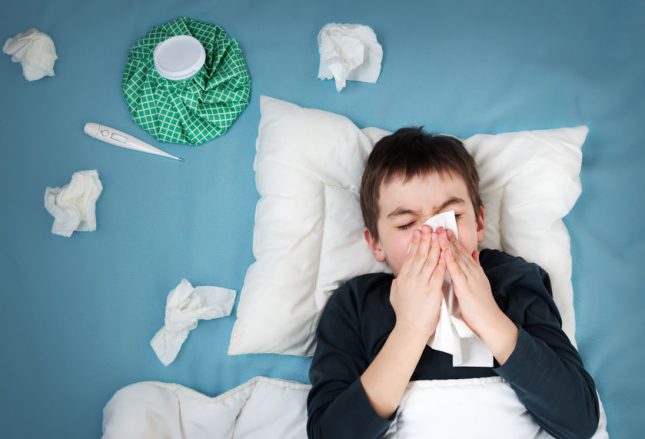Common colds are something hard to avoid during the winter months. Young children may get between six to ten colds per year and once one family member has a sniffle, the germs generally do the rounds.
Every year, New Zealanders try to fight colds by spending lots of money on health supplements, including over-the-counter, complementary and alternative medicines. In fact, globally the vitamin and supplement market has grown by almost 25% in the last 5 years alone, and is expected to keep growing.
These products can be expensive, and some cough and cold remedies have limited evidence of effectiveness in children. Always read the pack label and check with your pharmacist when buying medicines for your children.
For colds prevention is the best medicine
Unfortunately, there’s no cure for a common cold, and few medicines that actually treat the symptoms. In fact, the most effective management for winter illnesses is to avoid catching them in the first place! Perhaps easier said than done, but there are some things you can encourage in the family to keep the winter bugs at bay:
- Regular hand washing (teach children to wash their hands with soap and warm water after using the toilet, before meals and snacks and after the playground).
- Keep your children home from school or daycare when they’re sick.
- Aim for nutritious, wholesome meals three times a day with healthy snacks in between.
- Make sure everyone gets plenty of sleep each night and gets some fresh air and physical activity every day.
What if it’s more serious than a cold?
It’s important to understand when an illness is more significant than the common cold. Sickness in children can develop rapidly. Look out for the danger signs listed below. If your child has any of the following symptoms, see a doctor immediately or call 111. Always seek medical advice if you feel your child is getting worse:
- pale mottled skin, ashen or blue
- child does not wake when roused or can’t stay awake
- crying is weak or high pitched
- breathing difficulty, including nasal flaring, grunting, rapid breathing, wheezing or raspy breath
- dry mouth and nose, poor fluid intake or poor feeding, and reduced urine output
- a persistent fever
- swelling of limbs or joints
- a rash that doesn’t disappear when you press it
- neck stiffness
- seizures
- bile stained vomit
- bulging fontanelle in babies
Managing your child’s illness at home
When children are sick, we often turn to paracetamol, such as Pamol, to relieve general aches and pains, and to help relieve the pain associated with fever. But remember, just because your child has a fever doesn’t mean you need to give them paracetamol – unless they’re miserable or in pain. Fever is a natural immune response that helps to fight infection. This guide can help you manage your child’s temperature at home.
Do
- use paracetamol if your child appears distressed or unwell
- check with your pharmacist if you think paracetamol is not working
- keep up regular fluids (breast milk if breast feeding), and check for signs of dehydration
- check your child regularly overnight
- keep your child away from day-care or school while the fever persists.
Do Not
- Routinely use paracetamol and ibuprofen together
- under-dress or over-wrap the child
- sponge the child or put them in a cool bath (i.e. “tepid sponging”)
Keep an eye on sore throats
Most sore throats are caused by viruses, and need no treatment other than pain relief. However, it’s advisable to see a doctor within 1 to 2 days if your child has a sore throat. It could be ‘strep throat’, a condition caused by bacteria called Group A Streptococcus, which can be easily treated with antibiotics.
In a small number of cases, an untreated strep throat can develop into rheumatic fever, an autoimmune disease where the child’s immune system attacks their heart instead of the germs from an illness – causing lasting scarring of the heart valves.
If your child is given antibiotics for strep throat, it’s important they take them for the whole 10 days, even if they feel better. The antibiotics will kill the bacteria and prevent rheumatic fever developing. If you suspect your child’s sore throat could be strep throat, see a doctor as soon as possible.
Prescribe TLC (time, love and cuddles)
When we’re under the weather, we feel lousy and need a little TLC. That goes for kids and grown ups! Make time for care and cuddles when your children are unwell. Cozy up and watch a video together or read them a favourite book, give plenty of hugs. Try to remember that most illnesses pass in a week or so and may ultimately help strengthen your child’s immune system.
Sponsored content.
Pamol® is for the treatment of children’s pain and fever. Pamol® suspensions contain paracetamol 250mg/5mL. Always read the label and use as directed. If symptoms persist see your healthcare professional. Incorrect use can be harmful. ® Registered Trademark. Aspen Pharmacare C/- Healthcare Logistics, Auckland. TAPS PP8035-AP16







